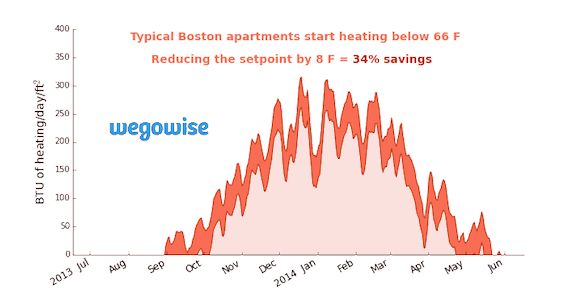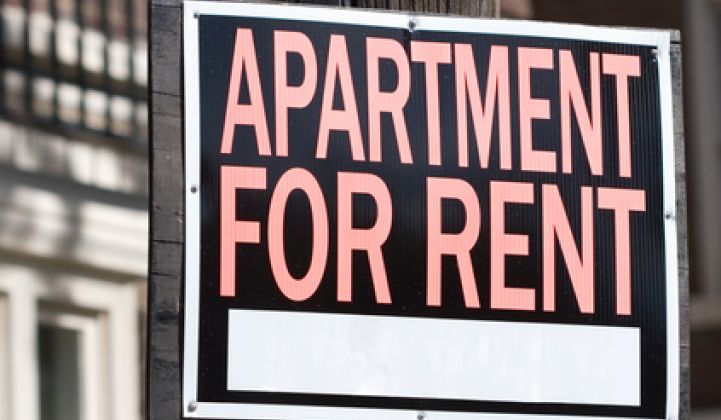Admit it: when someone else is paying for something, doesn't it make you want to consume more?
Perhaps you order that fancy dessert or an extra bottle of wine when your friend takes you out to dinner. Or you maybe you binge-watch HBO in your hotel room. It's easy to keep consuming when you don't have to pay the full cost.
And that's exactly what people who don't have to pay their own utility bills do as well.
WegoWise, a startup that remotely analyzes building energy consumption, wanted to know how much more energy apartment-dwellers consume when they don't have to directly pay their bill. The company looked at 3,000 multifamily and affordable housing units throughout Massachusetts and found that tenants used 30 percent more BTUs per square foot when landlords had to pay the bills. The firm also found that annual utility costs for landlords were 20 percent higher than when tenants directly paid the bills.
In buildings where tenants paid, WegoWise found that temperatures were six degrees lower on average during heating months.
Here's what energy consumption looks like when heating setpoints are lowered or raised by single degrees:

The conclusion is not all that revelatory. Back in 2003, researchers at Georgetown University found that tenants in apartment buildings who had utilities bundled into rent were leaving their thermostats a few degrees higher during the winter. But it's further proof that split incentives between building owners and tenants create a problem for encouraging energy efficiency.
According to a study from ACEEE, the U.S. multifamily housing sector alone represents a $3.4 billion energy savings opportunity. In order to tap that potential, the organization identified a number of ways to align the interests of tenants and landlords and give them an incentive to reduce energy use.
For example, renters are far less likely to have energy-efficient appliances in their apartments than homeowners. Researchers at ACEEE suggested structuring utility incentives so that they directly target building owners when they are making upgrades to their apartment buildings.
In many cases, however, those financial incentives will need to go further. A green lease, an agreement between landlord and tenant to share the cost (and savings) of an efficiency upgrade, could help bridge the gap created by split incentives.
Then there's the importance of using data to show tenants and landlords the building's energy consumption to kick-start the process, which is what WegoWise is doing. As energy benchmarking laws expand, those will also encourage building owners to think more about energy use.
Utility incentives are getting more targeted and buildings' energy use patterns are getting a bit more transparent. But as this latest data makes clear, the split incentive issue is still a significant obstacle to energy efficiency.



